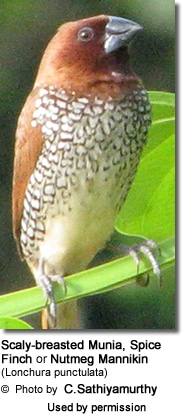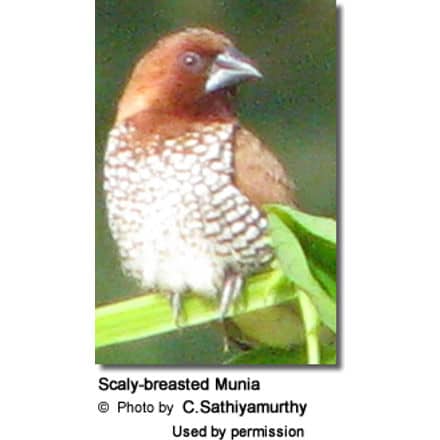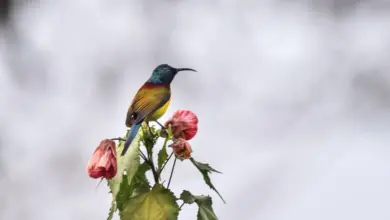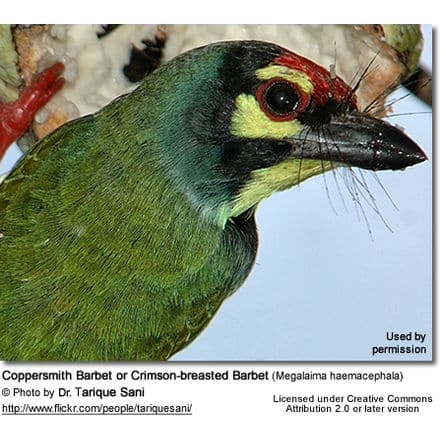Spice Finches
Finch Information … Index of Finch Species … Photos of the Different Finch Species for Identification
Spice Finches (Lonchura punctulata) have grown to be amongst the most popular aviary birds globally. Captive birds are known as “Spice Finches” and their wild counterparts are referred to as Scaly-breasted Munias, Spotted Munias, or Nutmeg Mannikins.
These birds are native to Asia, but feral populations have been reported in the United States, Puerto Rico, Hispaniola, and Australia.
The below information is courtesy of Mandy and Paul – Breeder of Canaries and Other Exotic Birds – Singing Wings Aviary – www.singing-wings-aviary.com (A great source for these beautiful little finches)
Mutations/Sub-species:
There are several know sub species of Spice Finches. The most common being the Topela species.
Compatibility:
Spice Finches are social by nature and will get along together or with other bird species. Just be careful not to put them with other species that might be agressive towards them.
 Housing:
Housing:
This species can be housed in breeding cages but they will thrive in a large planted aviary with plenty of room to fly, sing and socialize. The best temperature to maintain is around 75 degrees as Spice finches do not do well in cold temperatures.
Song:
If not paying close attention you can miss the male’s song as it is very quiet and barely noticeable. He will stand upright on the perch while stretching his neck to sing. This species does not sing as often or near as loud as a Society Finch. The hens do not sing but do make clicking or warning sounds.
Breeding:
Spice Finches are free breeders but seem to do better in a colony setting than in single breeding cages. They will adopt finch nest, canary nest or finch boxes. You can supply dry grasses, sisal, coconut fiber or mosses as nesting material. I have seen Spice Finches take over raising other species in a mixed flight.
They will cross with Society Finches and other mannakins so try to add even pairs of different species to your aviaries.
After mating occurs Spice Finches will lay 4-6 eggs in which they will incubate together for 14 days.
It is important to supply a variety of green food, eggfood, soaked seeds and live food for the parent birds to feed the young. Normally, 3 weeks after hatching young Spice birds fledge returning to the nest with the parents at night. It takes another 2 weeks before the young birds are fully independent.
The young birds get adult plumage in splotches and it can take 4-7 months for them to retain full adult plumage.
Diet:
A good diet for Spice Finches includes cereal seed, paddy rice, mixed millets, and green foods.
Sprouted or germinated seeds are usually more easily accepted by “seed addicts” than fresh fruits and vegetables.
- Sprouted seeds are healthier as the sprouting changes and enhances the nutritional quality and value of seeds and grains. Sprouted seeds are lower in fat, as the process of sprouting utilizes the fat in the seed to start the growing process – thus reducing the fat stored in the seeds.
- Sprouted seeds will help balance your bird’s diet by adding a nutritious supply of high-in vegetable proteins, vitamins, minerals, enzymes, and chlorophyll.
- Soaked and germinated “oil” seeds, like niger and rape seeds, are rich in protein and carbohydrates; while “starch” seeds, such as canary and millets, are rich in carbohydrates, but lower in protein.
- It is an invaluable food at all times; however, it is especially important for breeding or molting birds. Sprouted seeds also serve as a great rearing and weaning food as the softened shell is easier to break by chicks and gets them used to the texture of seeds.
Fresh water, cuttlebone, and grit should be supplied at all times. Lettuce, Spinach, Chickweed, spray millet, Eggfood, Broccoli tops and Carrot tops can also be offered on a regular basis. Live food is not necessary for the species.
Other Resources:
- Common Health Problems of Finches
- Finch / Canary Diet / Nutrition
- Finch Data: Range, Length, Clutch-size and Incubation Periods for each Finch Species
Species Research by Sibylle Johnson
Please Note: The articles or images on this page are the sole property of the authors or photographers. Please contact them directly with respect to any copyright or licensing questions. Thank you.


 Housing:
Housing:

